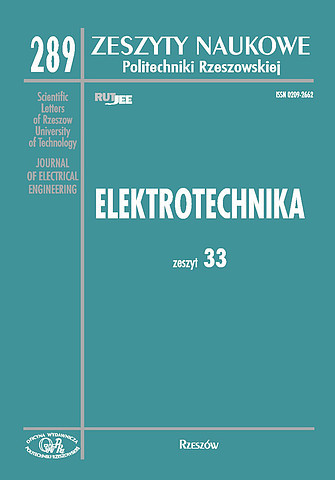Abstract
Widespread earthing systems can be created in buildings due to connection of all earthed objects to a common equipotential bar. Such a system consists of not only earthings around the object to be protected, but as well wide earthings of very far objects for example earthing systems of transformer stations suppllying the protected object. Measurements of such wide system by usage of low frequency methods give usually both low resistance results and too optimistic evaluation of its properties for lightning protection purposes. Earthing tests using impulse method seem to be especially useful for extensive earthings, because only a part of the tested system is taken into account at such evaluation. This part of an earthing system taking part in lightning current dissipation to a surrounding soil is called effective length of earthing. The effective length depends first of all on resistivity of soil surrounding the evaluated earthing. Computer simulations show, that an earthing elongation above its effective length has no influence on a voltage of earthing feed point during lightning current stroke. Results of computer simulations have been confirmed by tests carried out on real wide objects.
References
[2] Musiał E.: Kontrola stanu technicznego urządzeń ochrony odgromowej i przeciwprzepięciowej, Biul. SEP INPE, 2008, Nr 100, s. 18-36.
[3] Szpor S., Samuła J.: Ochrona Odgromowa, WN-T, Warszawa, 1983.
[4] Wojtas S., Wołoszyk M.: Ocena uziemień odgromowych według aktualnych przepisów normalizacyjnych, VI Krajowa Konferencja N-T "Urządzenia Piorunochronne w Projektowaniu i Budowie, SEP Kraków, 20.10.2012.
[5] Wołoszyk M., „Pomiary impedancji (rezystancji) udarowej uziemień odgromowych”, Rozdział w publikacji: Gryżewski Z.: Prace pomiarowo – kontrolne przy urządzeniach elektroenergetycznych o napięciu do 1 kV, COSiW SEP, Warszawa, 2002.
[6] ANSI/IEEE Std 81-1983 - IEEE Guide for Measuring Earth Resistivity, Ground Impedance and Earth Surface Potentials of a Ground System.
[7] PN-EN 62305-1:2008 - Ochrona odgromowa. Część 1: Zasady ogólne.
[8] PN-E 05003-3:1989 – Ochrona odgromowa obiektów budowlanych. Ochrona obostrzona.
[9] PN-IEC 61024-1-1:2001 - Ochrona odgromowa obiektów budowlanych. Zasady ogólne. Wybór poziomów ochrony dla urządzeń piorunochronnych.
[10] PN-E 05115:2002 - Instalacje elektroenergetyczne prądu przemiennego o napięciu wyższym od 1 kV.
[11] PN-EN 60071-2:2000 - Koordynacja izolacji. Przewodnik stosowania.
[12] PN-EN 62475:2010E - Wielkoprądowa technika pro-biercza. Definicje i wymagania dotyczące prądów pro-bierczych i układów pomiarowych.
[13] PN-E 04060:1992 - Wysokonapięciowa technika probiercza. Ogólne określenia i wymagania probiercze.





